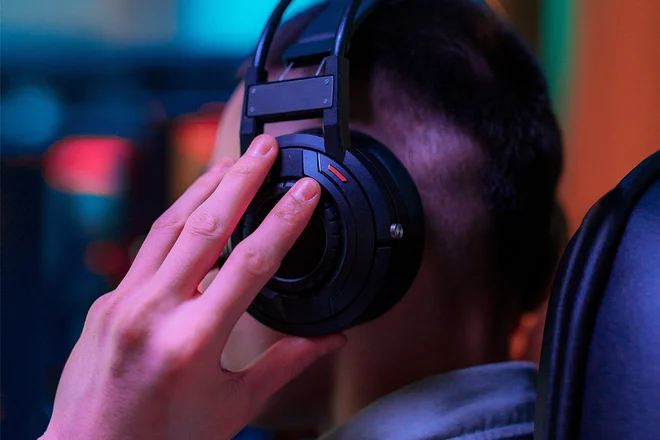
For marketing professionals, you may notice an increasing interest in audio marketing and branding. The most recent “state of the industry” survey by MediaVillage/The Meyers Report asked respondents what industries they’d need assistance explaining to others. Sonic branding was ranked as No. First on the list, ahead of cryptocurrency, blockchain and NFTs.
Many are well-versed in identity’s visual and verbal aspects, but what is a sonic identity? Consider it in terms of applying audio cues, such as audio logos, anthemic sound design, and selected vocal talent together to increase brand recognition, affinity, and ultimately the intent to buy. Research has shown that audio cues are generally superior to visual cues regarding messaging. But, as per Ipsos, despite the rapid growth of voice-led computers that do not require screens, only a tiny fraction of companies benefit from audio’s inherent benefits.
Brain Science: your mind on the move
“It all starts in the brain,” he explained. “The brain is the centre of everything.” said Dr Paul Zak, Claremont University professor and author of “Immersion: The Science of the Extraordinary and The Source of Happiness,” Zak said that our hearing sense of hearing is fundamental, perhaps even primordial. “Sound is deep into your brainstem. It can increase your heart rate or cause your hands to sweat,” the doctor said.
From a branding standpoint, The main reason is that sounds often are a reminder of particular emotional states or memories. This kind of brand-related connection is precisely why we’re seeing the need for integrated audio strategies in advertising. Audio attracts more interest and a greater level of immersion than other types of media, such as television, video and social, according to the Engaged Impressions study by Audacy.
How audio influences behaviour
There are several audio-based touchpoints businesses can make use of when designing sonic solid identities.
- The use of sonic logos. Audio cues are efficient mnemonic devices. They are a great way to consolidate a brand’s visually and verbally recognizable identity. Some marketers develop a sonic logo toolkit that includes variations that are based on mood and genre, length, or format. Some prefer to concentrate on a single “hero” sonic logo and use it throughout all ad messages.
The trick is to determine which strategy will best resonate with your people who are interested and ensure that it is consistent across commercials and channels. Some advertisers have changed away from famous jingles we may think of as McDonald’s and State Farm to shorter yet still hummable formats that can be used across various applications.
- Music and brand songs are anthems for brands and. We’ve all heard an old favourite tune repeatedly. The issue to marketers is to discover the song or anthem for the brand, which connects at a more fundamental level. It should be one that is in line with the DNA of a brand’s foundation and triggers the positive chemical reaction in the brain that prompts the target audience to pay to. Listen to Burger King (again, pun intended), and its eminent tunes are difficult not to see on TV and TikTok. “You Rule,” the “You Rule” songs hit the mark with unquestionable swagger and high frequency.
- Voice. Human-to-human interaction is universal. Effective marketers understand that it’s essential to find the right voice that can make an effective connection in the space of audio. Voice talent has transformed into more than an actor reading scripts, but an ambassador for frontline positions whose influence immediately conveys an alignment with your brand’s personality.
Outside of the realm of advertising, the emergence of audio-first platforms such as audio podcasts and assistants on digital devices has businesses interacting more frequently with customers via the voice. A well-planned strategy for vocals can improve the image of a brand across every audio interaction.
- Sound design for user experience. From worlds that are new in the metaverse to contemporary gadgets connected with the Internet of ,Things the field of sound interaction design is expanding as companies increasingly employ auditory signals to create positive experiences for consumers. A well-designed soundscape for a product should not only be able to communicate with users throughout the customer experience but should inspire joy. Soon it is likely that sound will become the primary interaction tool. This is the first time you’ve heard about it.
Accent on the sound identity
Best Buy gets it. Both in the digital and physical worlds, Best Buy exemplifies innovative strategies in sound strategies by launching the ad campaign, which revolves around small “victories,” or everyday successes created by technology. Through multiple channels, including social video, TV radio, streaming audio and radio, the company makes use of the original glissando-like audio cue that resembles the clink or ding that is produced by digital devices. Best Buy’s unique sound – designed to remind people that they’ve finished something — is played at the conclusion of every commercial. It’s original. It’s memorable. It’s evocative.
Concentrating on the audio experience of customers makes business sense. Sound brand cues are close to 90% more likely to produce an effective ad. Brands that use music that is in line with their brand’s image are 96 per cent greater likelihood to get remembered than those that use insufficient and no music.
In closing, In my role as an executive in charge of marketing of Audacy, I’m biased, but the way that a brand’s voice sounds is equally important, if not more so, than the way it looks.
